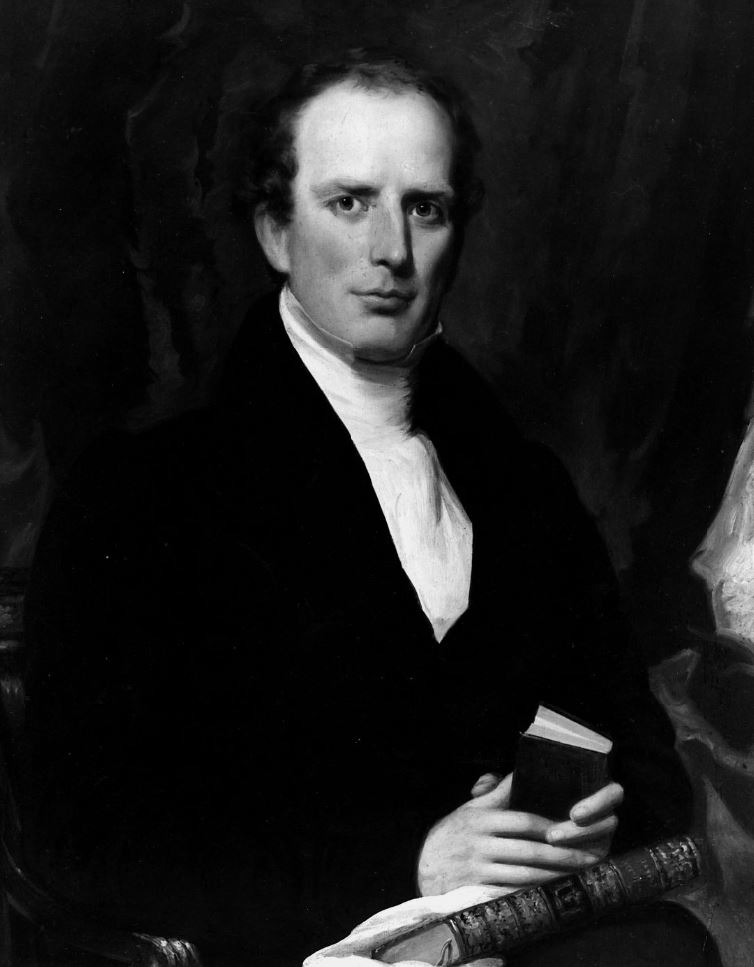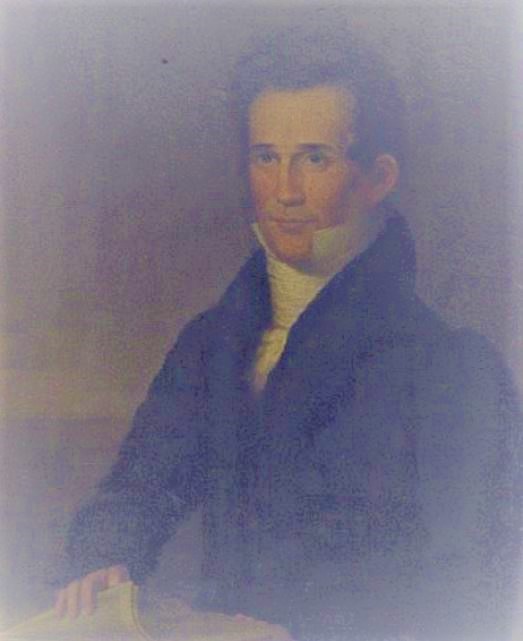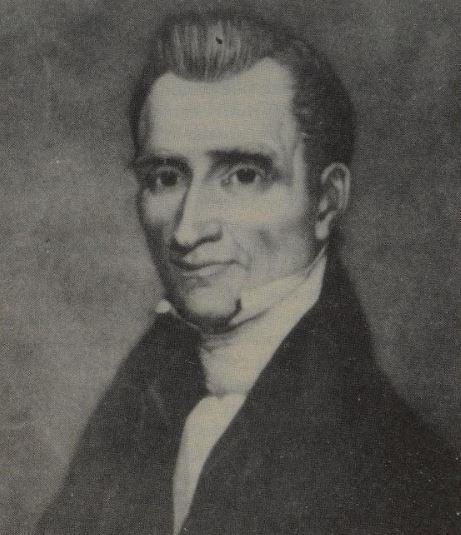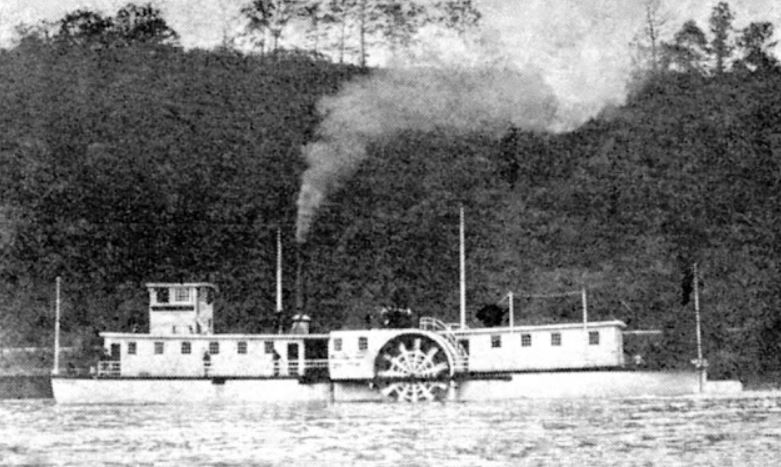

State of Pennsylvania in blue, State of Delaware in red

Charles Grandison Finney – Father of modern revivalism and the leading figure of the Second Great Awakening
Introduction
Charles G. Finney’s (1792-1875) unique methods of evangelism earned him the title of the “father of modern revivalism.” His methods paved the way for other mass-evangelists, like Dwight L. Moody, John W. Chapman, Billy Sunday, and Billy Graham, who adapted and built upon Finney’s methods.
Background Information
With this revival account being one in a sequence of revivals during the life of Charles G. Finney, we recommend first reading our accounts of the initial revivals he was involved with in the northern and central part of New York State:
► 1824 Evans Mills German Settlement Revival
► 1824 Antwerp, New York Revival
► 1824 Revival at Perch River and Other Locations
► 1825 Revival in Gouverneur, New York
► 1825 Revival in De Kalb, New York
► 1825 Revival in Western, New York
► 1825 Revival in Rome, New York
► 1826 Revival in Utica, New York
► 1826 Revival in Auburn, New York
► 1826-1827 Revival in Troy, New York
► 1827 New Lebanon & Stephentown Revivals

Rev. Eliphalet Wheeler Gilbert – Pastor of Second Presbyterian Church in Wilmington, Delaware
From Stephentown to Wilmington
While Charles Finney was conducting the New Lebanon Revival, in the summer of 1827, the Rev. Eliphalet Wheeler Gilbert (1793-1853), pastor of Second Presbyterian Church in Wilmington, Delaware, made a visit to his father’s home in New Lebanon. Gilbert saw the results of the revival and invited Finney to come to Wilmington to hold services in his church.
After the New Lebanon Revival, and the subsequent Stephentown Revival, located 7 miles to the north, Finney made his way to Wilmington—departing Stephentown on Sunday, December 2, 1827, and arriving in Wilmington two weeks later.

Locations mentioned in this revival account
The Condition of the Wilmington Second Presbyterian Church
Upon his arrival in Wilmington, Finney discovered that the congregation’s teachings were “the oldest of the Old School views,” in that they believed that:
► God would save sinners in his own time, and that nothing could be done to alter that.
► An attempt to preach on repentance and encourage people to convert to Christ would be taking God’s work out of His hands.
These views left their prayers for the salvation of sinners to be completely devoid of faith, and Finney knew that a revival would never take hold as long as those beliefs were left intact. To bring about change, he spent hours every day discussing with Gilbert about this teaching, and did so in a cordial manner. After a few weeks of these discussions, Gilbert gave permission for Finney to present the different viewpoint to his congregation.
Preaching for Repentance and Conversion
With the freedom to preach this “new doctrine” that man has a free will and that salvation can be instantaneous, with a packed house Finney preached for two hours on the subject, which was the typical length of all his sermons. In this sermon he discussed what they had been taught (Old School Calvinism) in comparison to his teaching that salvation is available for all.
The response from the congregation was mixed.
► Some were intensely interested.
► Some wept.
► Some were offended.
► Some were disgusted.
► Some laughed.
► Some were angry.
From that point on the revival began to move forward in Wilmington, with Gilbert’s views greatly changing, embracing what Finney was teaching.

Rev. James Patterson – pastor of First Presbyterian Church in Philadelphia, Pennsylvania
Revival Spreads to Philadelphia
While the revival in Wilmington was beginning, Finney was invited to preach in Philadelphia, Pennsylvania, twice each week at the First Presbyterian Church of the Northern Liberties, Philadelphia (Rev. James Patterson: 1779-1837). Finney’s transportation between the two cities was by steamboat, and with the distance being about 40 miles, he would preach in one church in the evening, then in the other city the alternate evening.

Steamboat of that era
Revival Excels in Philadelphia
As the work in Philadelphia became more profound than the ministry taking place in Wilmington, Finney decided to leave Wilmington mid-January 1828 and commit all his time to the large city of Philadelphia.
Even with Finney preaching from the New School point of view, Patterson did not object, because he
cared a great deal more for the salvation of souls than for… any of those points upon which the Old and New School Presbyterians differ.
The Revival Was Powerful
With the pastor of the church giving Finney his full support, the church was packed during every meeting. Patterson told Finney one day that if the other Presbyterian pastors in town heard that he was preaching the New School doctrines, they would run him out of town. But the opposite occurred, with every Presbyterian church welcoming him to preach, with the exception of one. This united front led to many conversions to Christ during the revival.
The revival was so powerful that all their meetings were crowded, for preaching and prayer, as well as meetings for new converts.
Results of the Revival
After preaching in Patterson’s First Presbyterian Church for several months, as well as in nearly all Presbyterian churches in the city, Finney then moved to a central position in the city, which was the large German Reformed Church on Race Street. This church, whose pastor was Samuel Helffenstein, Jr. (1775-1866), was the largest in the city, with the seating capacity of 3,000.
► The meetings held for new converts occurred once and sometimes twice per week, being attended by 100-140 people each time.
► There was never an abatement in the revival during the time Finney was in the city.
► The converts were so numerous that there was no way to calculate the total. One account said that there was “the conversion of some hundreds.”
► There was tremendous unity among the believers, with those of other denominations participating in and reaping the benefit from the meetings in the Presbyterian churches.
► Finney remained in Philadelphia from January 1828, till January 1829.
Extraordinary Prayer
The people of First Presbyterian Church in Philadelphia were highly committed to prayer, and while Finney was ministering in that church, he remembered a period of 2-3 days when “there seemed to be something in the way.” It was like something was blocking the ministry of the Word. One evening, an elder of this church stood and made a confession, explaining why this barrier had arisen:
“Brethren, the Spirit of God has been grieved, and I have grieved him. I have been in the habit,” said he, “of praying for Brother Patterson, and for the preaching, on Saturday night until midnight. This has been my habit for many years, to spend Saturday night till midnight in imploring the blessing of God upon the labors of the Sabbath. Last Saturday night,” he continued, “I was fatigued, and omitted it. I thought the work was going on so pleasantly and so powerfully, that I might indulge myself, and go to bed without looking to God for a blessing on the labors of the Sabbath. On the Sabbath,” said he, “I was impressed with the conviction that I had grieved the Spirit; and I saw that there was not the usual manifestation of the influence of the Spirit upon the congregation. I have felt convicted ever since; and have felt that it was my duty to make this public confession. I do not know,” said he, “who beside myself has grieved the Spirit of God; but I am sure that l have done so.”
Primary Sources
► Chapter XVIII Revival at Wilmington, Delaware, and Philadelphia, Pennsylvania: The Memoirs of Charles G. Finney by Charles G. Finney
► The Memoirs of Charles G. Finney: The Complete Restored Text by Charles G. Finney
Secondary Sources
► Charles G. Finney by Wikipedia
► Charles Grandison Finney & the Second Phase of the Second Great Awakening by Christian History Institute
► Eerdman’s Handbook to Christianity in America by Mark A. Noll
► Fire From Heaven by Robert Evans
► Great Revivals and the Great Republic by Warren Candler
► Man of Like Passions: The Life Story of Charles Grandison Finney by Richard E. Day
► Memoirs of Revivals of Religion by Charles G. Finney
Return to List of Revival Stories
Chet & Phyllis Swearingen:
Office: (260) 920-8248
romans1015@outlook.com
Beautiful Feet
P.O. Box 915
Auburn, IN 46706

